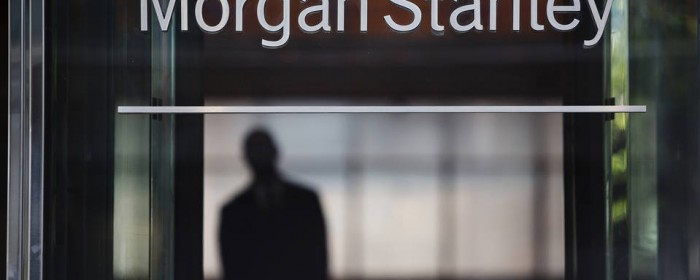Moody’s Upgrades Four Top U.S. Banks
Morgan Stanley, Goldman Sachs, Bank of America, Citigroup upgraded
Morgan Stanley received a two-notch upgrade. PHOTO: VICTOR J. BLUE/BLOOMBERG NEWS
Updated May 28, 2015 9:38 p.m. ET
Morgan Stanley received a long-awaited ratings upgrade from Moody’s Investors Service, an endorsement of the firm’s strategy shift and a move that could help the bank pick up new trading clients.
In raising Morgan Stanley’s rating two notches, Moody’s determined that strategic changes at the investment bank in recent years have resulted in a safer business model and improved profitability.
Goldman Sachs Group Inc., Bank of America Corp. and CitigroupInc. received one-notch upgrades as part of a broader Moody’s review of the largest global banks.
The actions were in part a reversal of the downgrades Moody’s issued to several banks in 2012. Moody’s at that time found that the European sovereign-debt crisis and other macroeconomic and regulatory factors were crimping banks’ profitability.
Since the downgrade, Morgan Stanley Chairman and Chief Executive James Gorman has continued to push the bank away from volatile activities such as trading while expanding in businesses such as wealth management that generate earnings more steadily. Moody’s said that those switches to its business mix, as well as changes to its funding that would lead to fewer losses for creditors if the bank were to fail, led it to upgrade Morgan Stanley’s debt by two notches from Baa2 to A3.
“The business diversification they embarked on a few years ago is bearing fruit,” said David Fanger, a Moody’s analyst. “We’re seeing more consistency of performance.”
In 2012, analysts estimated the move would cost Morgan Stanley hundreds of millions of dollars in revenue. Mr. Gorman criticized Moody’s decision and told employees that “we still do not believe that this outcome reflects all of the transformative changes we have made to the firm.”
A spokesman for Morgan Stanley said in an emailed statement that the upgrade is “an important codification of all the work we have done and the consistency of our results.”
In the first quarter, Morgan Stanley’s return on equity, a commonly used measure of bank profitability, rose above 10%, a level that executives had set as a target. It was the first time since the first quarter of 2010 that Morgan Stanley’s return on equity exceeded 10%.
The ratings upgrade is expected to translate into a decrease in borrowing costs for Morgan Stanley and could lead to the bank’s securities division picking up new clients. Many institutional investors have rules that require them to work with only the most highly rated banks as counterparties.
In giving the others upgrades as well, the rating agency said that increased levels of debt issued by the big U.S. banks at the holding-company level in recent years led it to conclude that senior unsecured creditors would bear a smaller loss in the event of failure.
J.P. Morgan Chase & Co.’s rating was unchanged because the bank relies more on deposits for funding and less on other kinds of debt, Moody’s analysts said.
Moody’s also concluded in its review that new regulations on how to resolve failing banks made it less likely that the holding company of any big investment bank would receive government support in a crisis.

















